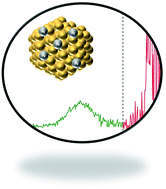Direct mercury determination in blood and urine by means of high-resolution continuum source graphite furnace atomic absorption spectrometry using gold nanoparticles as a chemical modifier†
Abstract
The determination of Hg in biological fluids, such as blood and urine, is important considering its known toxicity to human health. This kind of analysis typically requires the use of expensive instrumentation and/or sample pretreatment, which can be a problem for implementation in laboratories in low- and middle-income countries. In this work, a cost-effective methodology for the direct determination of Hg in blood and urine at low μg L−1 levels by means of high-resolution continuum source graphite furnace atomic absorption spectrometry (HR CS GFAAS) is presented. This method is based on the use of Au nanoparticles (Au NPs) as a modifier, which can be readily synthesized in any basic laboratory. By using this modifier, direct analysis of one sample can be performed in a few minutes without the need for extensive sample pretreatment and calibrating with aqueous standards. Although developed for HR CS GFAAS, this method might be adopted by any laboratory equipped with any GFAAS instrument. With our instrumentation, a characteristic mass of 16 pg and a LOD of 2.3 μg L−1 (for a typical sample volume of 10 μL, although higher volumes can also be analyzed, if required) was obtained for Hg, which is fit for purpose in the context of Hg exposure monitoring as a result of occupational hazards.

- This article is part of the themed collection: Atomic spectrometry for the analysis of biological samples


 Please wait while we load your content...
Please wait while we load your content...